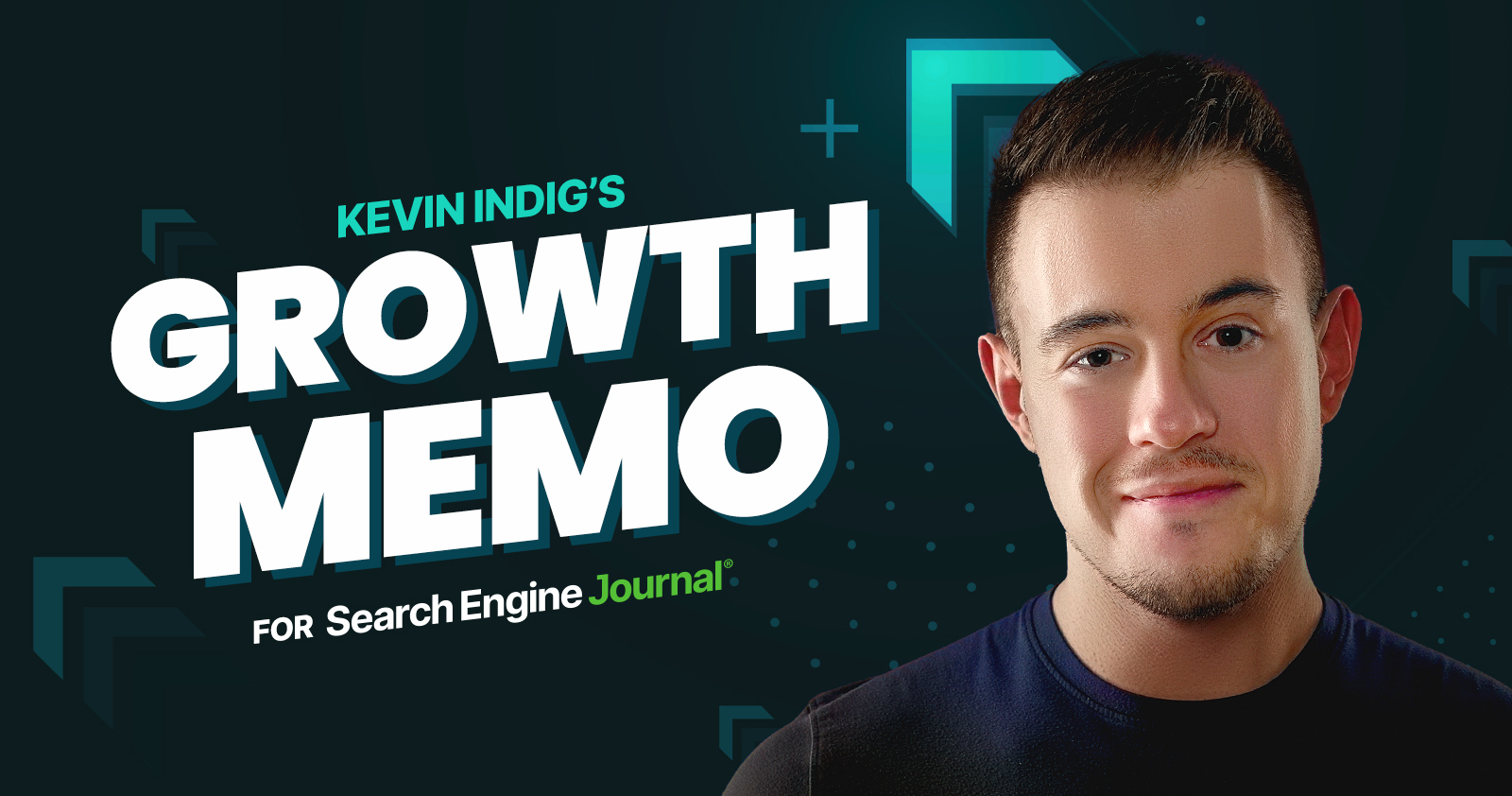Today’s Memo is a download straight from my brain about the current state of Search and AI. So much happened in the last few weeks, and I haven’t had a chance to sort out my thoughts.
Until now.
I’m finishing this Memo with exclusive insight into the KPIs I measure for search right now for premium subscribers .
In this issue, we’re looking at:
- The role of clicks in the future of SEO.
- How our work “fans out” into many channels.
- AI Mode and agentic search.
- The hot battle between Google and ChatGPT.
Let’s dive in!
Boost your skills with Growth Memo’s weekly expert insights. Subscribe for free!
On April 16 at 9 a.m., OpenAI dropped ChatGPT o3.
By noon, I’d already scrapped the slide deck I had finished the night before.
That whiplash has become routine: Each new model triggers the same loop – panic that it’s smarter than I am. Relief when I find the edges. Then, fresh panic as the cycle restarts.
When my coach, Heather, heard me vent, she dropped a killer quote that stuck with me since: “Kevin, constant change is the new normal.”
She’s right.
Releases land weekly, search interfaces mutate overnight, and the ground under every SEO strategy keeps sliding.
As we cross the midpoint of 2025, I want to freeze-frame what’s happening to search right now – and what it means for you.
Here’s the short version:
- Google’s AI Overviews (AIOs) inflate impressions while suffocating clicks.
- The clicks that survive carry more purchase intent than ever.
- “Performance” SEO is morphing into an “influence” play that spans Google, LLMs, and every social feed your customers consult for a second opinion.
Let’s unpack each shift, starting with the calories we’ve been counting all wrong.
Empty Calories
Since Google widened AI Overviews (AIOs) in March, one pattern rules them all: impressions up, clicks down.
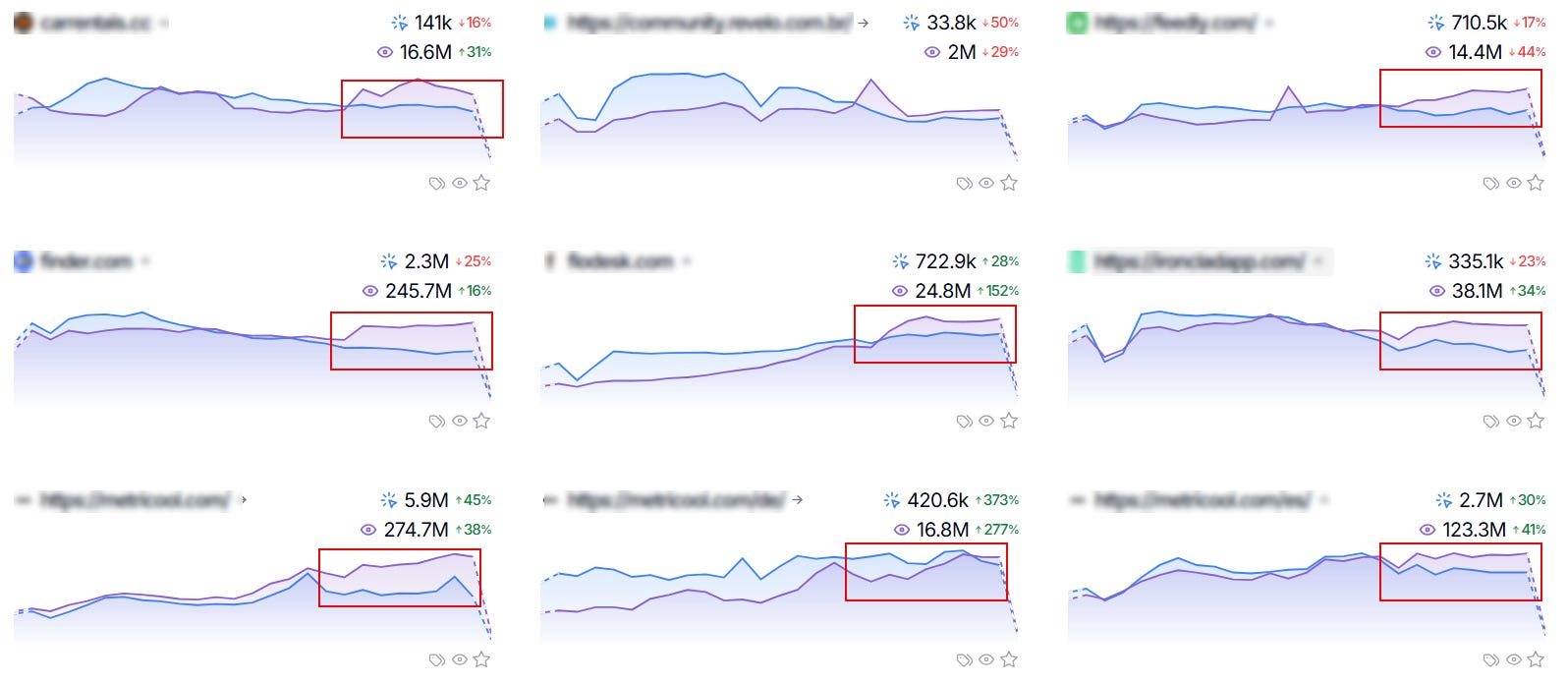 Image Credit: Kevin Indig
Image Credit: Kevin IndigWhy the gap?
Two reasons:
- People run more searches due to AIOs.
- Google now records an “impression” the moment someone expands the overview, and every cited source is logged as position 1.
The result: visibility inflation without visitors.
2024 was the year of peak traffic.
And looking at how few people clicked on links (a few percent) in the AIO usability study makes me think it’s entirely possible clicks drop to 10% or less of what we’ve been used to in 2024. And that’s ok.
Clicks have always been empty calories anyway. They were useful as a leading indicator for conversions/revenue/pipeline/sales/etc. (But that’s about it. Clicks didn’t mean dollars, and they didn’t mean real business growth.)
Of course, to us SEO folk, losing clicks sounds grim until you look closer at user behavior:
- We thought pogo sticking was bad, but it’s just normal search behavior.
- The only click that matters is the one that ends the journey.
- In our study, 80% of those “final answer” clicks still land on organic results, not the AIO.
- When people do click, it’s to validate, compare, or buy – high-intent actions that convert.
So, yes, raw clicks are vanishing, but the ones that survive are pure protein, not empty calories.
From Performance To Influence
Clicks are collapsing, but the ones that remain are loaded with intent.
That flips SEO’s value prop on its head.
For 20 years, we sold SEO as a performance channel, whether we wanted to or not.
The standard calculation was: Search volume ✕ CTR ✕ CVR = Projected dollars.
When a keyword couldn’t survive that spreadsheet, it died in committee.
Meanwhile, those same executives drop seven figures to get a logo the size of a postage stamp on an F1 car – no attribution model in sight.
Why? Influence.
The belief that persistent visibility bends preference.
SEO is crossing the same Rubicon. In an AIO-and-LLM world, you’re not just fighting for traffic; you’re fighting for mindshare wherever prospects ask questions:
- Google’s AI Overviews.
- ChatGPT.
- Reddit threads, YouTube comments, Discord chats.
Your brand needs to echo across all of them.
That means new yardsticks (i.e., KPIs, which I laid out in the premium section at the end of the article).
In short, SEO is graduating from direct-response to influence.
Treat it – and budget for it – like any other brand channel that shapes preference long before the buy button.
Channel Fan-Out
AI Mode turns a single prompt into dozens of behind-the-scenes queries – a process engineers call “fan-out.”
The same thing is happening at the channel level: Search itself is fanning out, escaping the browser and popping up in every feed, app, and device.
Although SEO pros have been talking about it for years, in 2025, that finally, actually matters – and for three big reasons:
1. LLMs have injected search into every app. Want a cookie recipe breakdown in Microsoft Excel? You can have it. Meta shipped a standalone Meta AI and wove it into WhatsApp, IG, and FB. YouTube and Netflix are testing AI Overviews so you can “search” for the perfect video without ever leaving their walls.1
Translation: discovery no longer begins – or ends – on Google.com. Each walled garden is now its own mini-SERP, and Google has to fight a thousand little AI search engines, not just ChatGPT.
2. People cross-check AI with humans: Our AIO usability study showed a consistent pattern: Users read the AI answer, then hop to Reddit threads, YouTube comments, or Discord chats to see whether real people agree.
Credibility now comes from echoing across both machine answers and human conversations. If you’re invisible on social or community platforms, you’re invisible in the final decision loop.
3. The pie is somehow getting bigger. TikTok, Facebook, Instagram, Threads, Bluesky, YouTube, Google, ChatGPT, Perplexity, Claude, Snapchat – the list keeps growing, and so do their daily active users.
Where’s the extra time coming from? Mostly legacy media: linear TV, radio, even mainstream news sites. Attention is being reallocated, not reinvented.
What it means:
- Your brand’s “search” footprint is now the sum of every place people ask questions.
- Monitoring only Google rankings is like checking the weather on one street corner.
- To win budget, tie each additional platform back to concrete customer insight – ideally gathered from, you guessed it, talking to customers and using tools like Sparktoro.
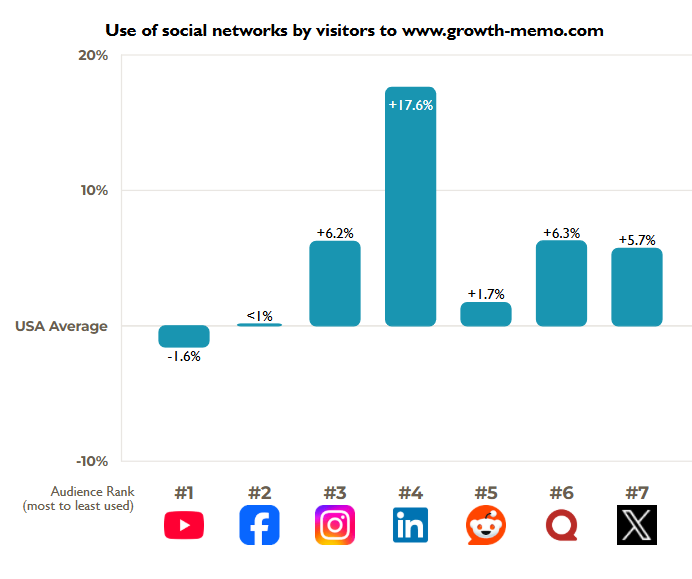 Sparktoro’s channel overview
Sparktoro’s channel overviewAI Mode
AI Mode is the “final boss” of search.
Sundar Pichai told Lex Fridman that “the results page is just one possible UI,” and VP of Search Liz Reid called it “a construct.”
In other words, Google’s happy to toss the classic SERP the moment the math works.
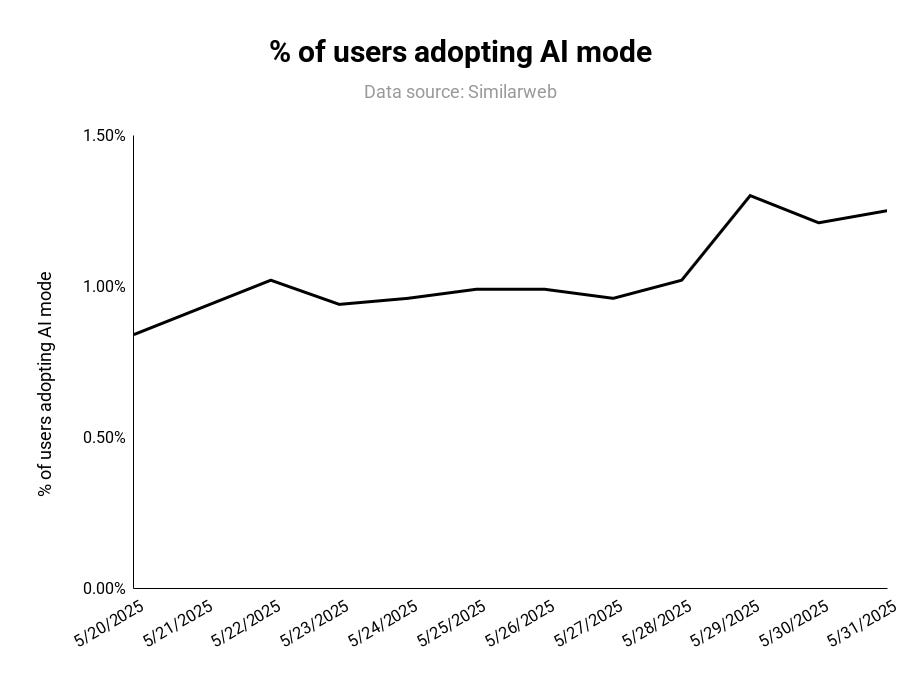 Similarweb data shows AI Mode adoption is a bit over 1% – for now (Image Credit: Kevin Indig)
Similarweb data shows AI Mode adoption is a bit over 1% – for now (Image Credit: Kevin Indig)But right now, the math doesn’t.
Similarweb shows AI Mode in barely 1% of queries, by design.
A single AI Mode answer can swallow 20-50 follow-up searches, erasing the ad slots those pages used to carry.
Until Google finds a new way to charge (embedded ads, pay-per-chat, who knows), rollout will stay throttled.
When that business model lands, AI Mode becomes paradise for anyone who understands user intent.
Behind each prompt, Google “fans-out” dozens of micro-queries – price, specs, comparisons, nearby, reviews – and stitches the answers together.
Those micro-queries are the very same long-tails you optimize for today; they’re just fired in parallel and reassembled into a narrative.
How to prep while the gate is still half-closed:
- Map the likely fan-out set for every core topic (look at People-Also-Ask, Related Searches, Reddit threads, etc. – more in a future Memo).
- Track rankings for each micro-query; gaps there equal lost citations in AI Mode.
- Structure content so it’s easy to quote: tight answers, clear sub-heads, rich schema.
Do the homework now and you’ll be ready when AI Mode graduates from beta to default – at least until the next boss fight, fully agentic search, shows up.
ChatGPT Vs. Google
The twist of 2025 is that Google is meeting ChatGPT on its own turf.
AI Mode lifts Google’s results page into the same chat-first UI that OpenAI popularized – proof that Google is willing to “level down” from its ad-optimized SERP if that’s what users expect.
Last year, I shared this graphic for the launch of ChatGPT Search and got lots of questions:
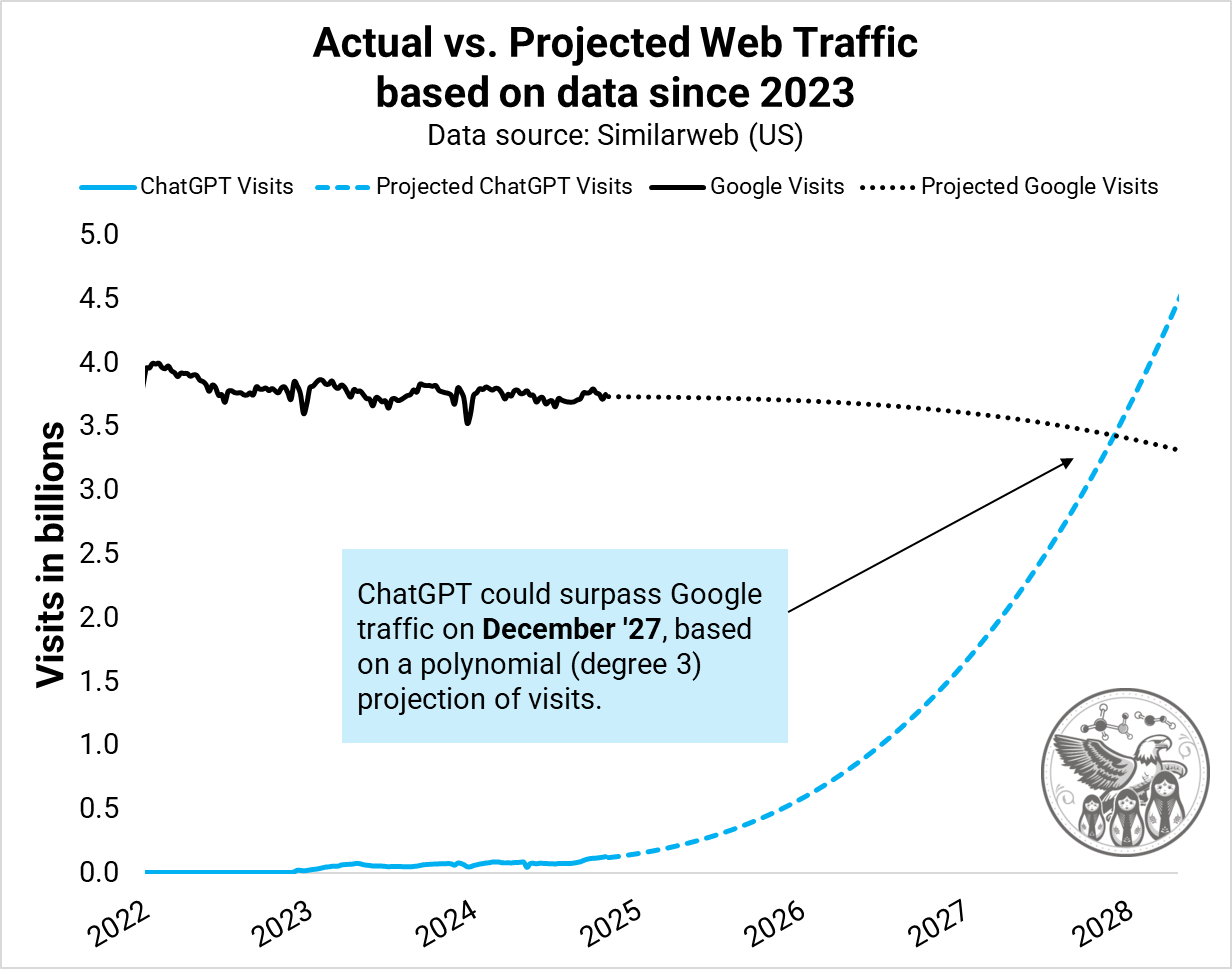 Image Credit: Kevin Indig
Image Credit: Kevin IndigTwo Takeaways From The Latest Projection (Chart Below):
- If you extrapolate the entire data set, ChatGPT overtakes Google in October 2030.
- If you extrapolate only the last 12 months, the crossover happens mid-2026.
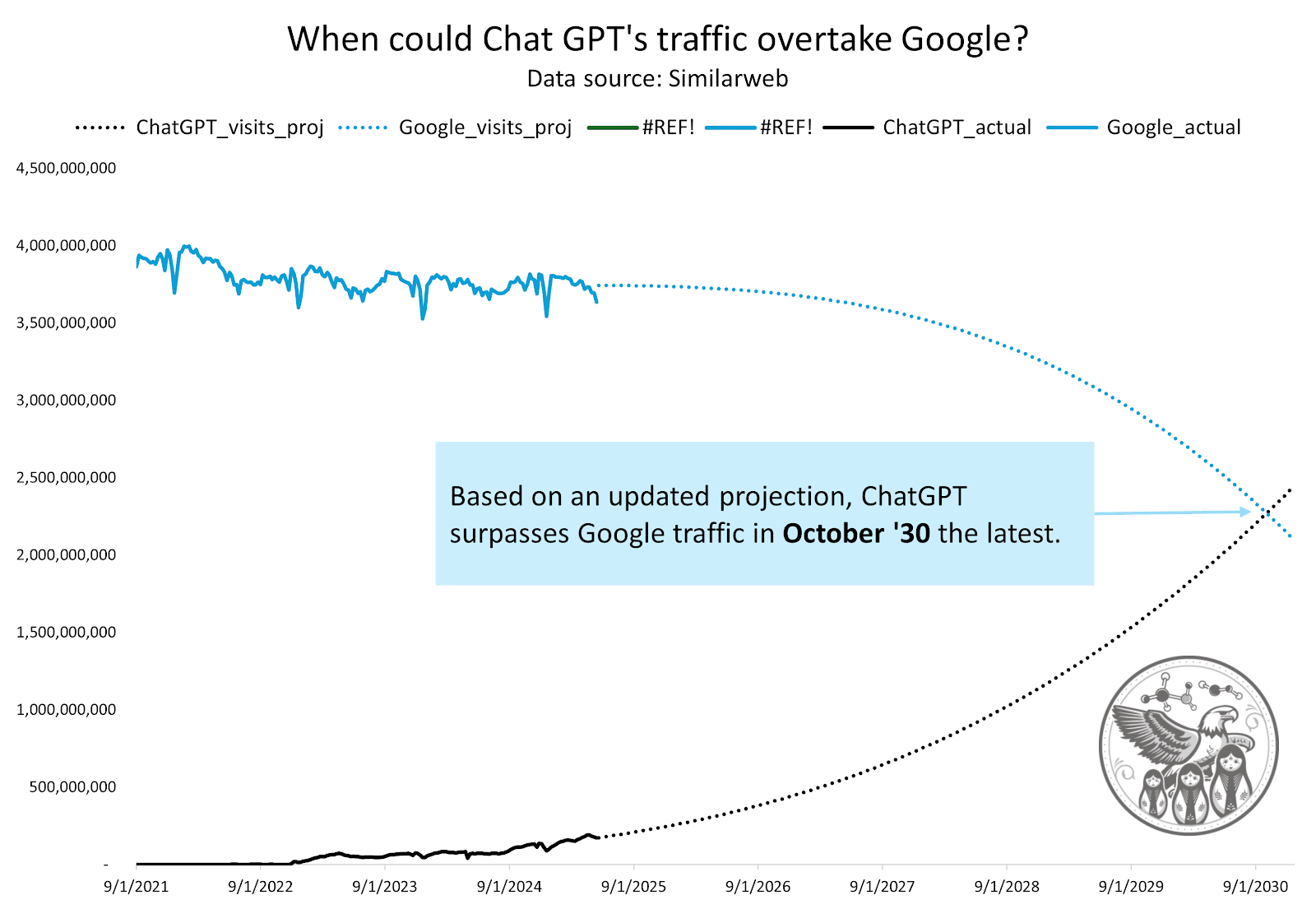 Image Credit: Kevin Indig
Image Credit: Kevin IndigImportant Caveats:
- Growth is not destiny. Google still owns distribution (Android, Chrome, Safari deals) and can slow ChatGPT by matching its features inside AI Mode and Gemini.
- The projection measures query share, not revenue share. Even if ChatGPT wins usage, Google’s ads can keep the cash register ringing longer.
- A single platform tweak (bundling, default settings, carrier deals) can bend either curve overnight – think of how Microsoft pushed Bing Chat via Windows updates.
What To Watch Next:
- Pay-per-chat or embedded-ad experiments: Whichever company nails monetization without wrecking UX will sprint ahead.
- Default-search contracts (Apple, Samsung, Mozilla) renewing in 2026–27. Losing any of those would be a body blow for Google.
- Mobile latency and offline mode: If ChatGPT can run acceptably on-device, Google’s web moat shrinks fast.
Bottom line: treat the Google-ChatGPT battle as a live A/B test for the future of search.
Your job is to be visible in both ecosystems until a clear winner emerges – and that may take years.
Conductor Mode
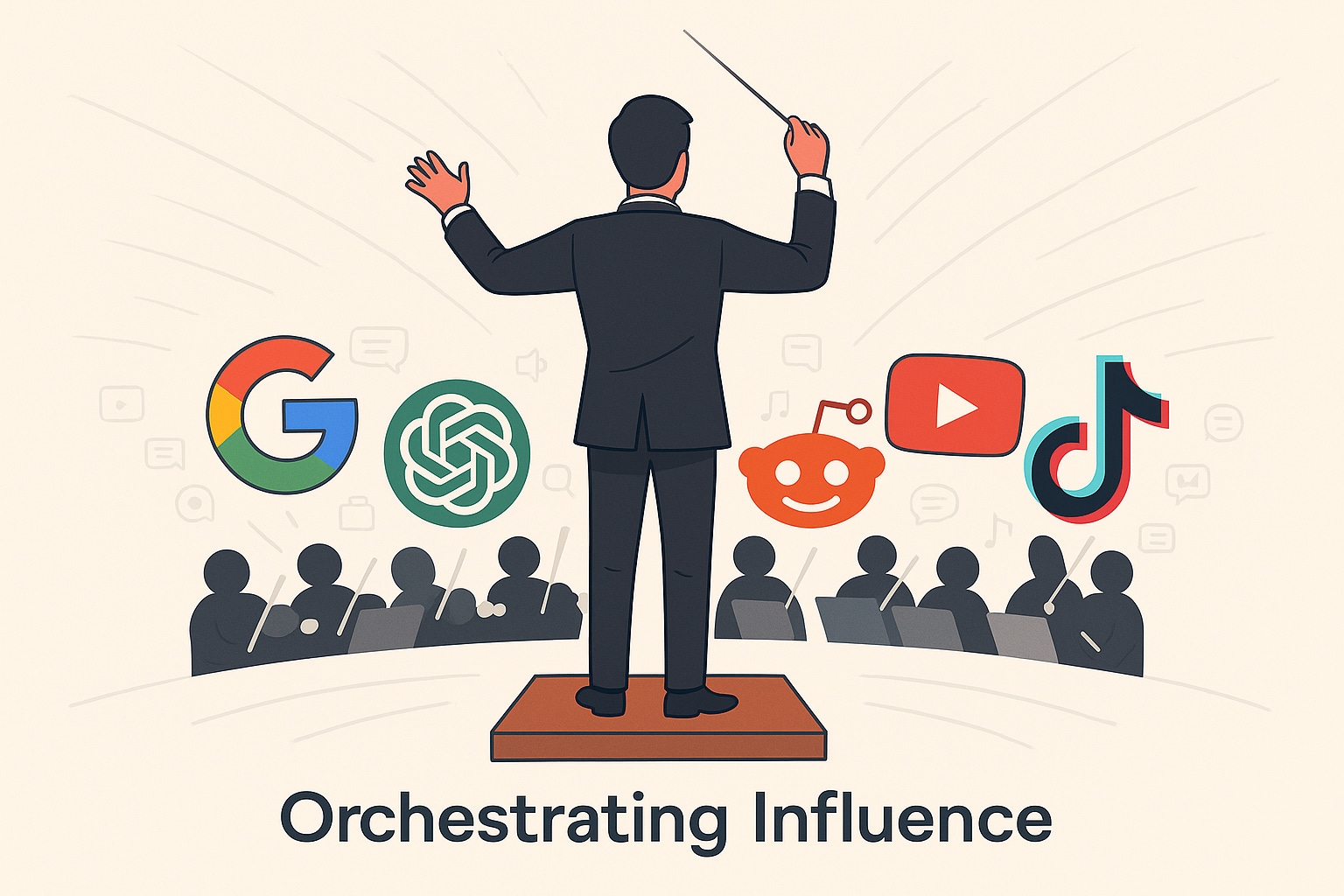 Image Credit: Kevin Indig
Image Credit: Kevin IndigSo, where does all of this leave SEO (leaders)?
Less in the weeds, more on the podium.
Your job is no longer to fine-tune a single channel; it’s to keep an entire orchestra in time as search fragments across AI Overviews, chatbots, and social feeds.
No other role sits at the intersection of so much (intent) data – and that gives you license (and responsibility) to conduct.
1. Paid Media
- Pipe impression, click, and conversion data from classic SERPs, AIOs, and AI Mode back into one shared Looker Dash.
- Swap keywords and creative weekly; AI churn demands shorter feedback loops.
2. Social & Community
- Mine Reddit threads, TikTok comments, and Discord chats to surface the “why” behind queries.
- Feed those insights straight to content so every article answers a real objection.
3. Product Marketing
- Hand them the exact language users copy-paste into prompts; that’s gold for positioning.
- Return the favor by baking the latest differentiators into every meta description, schema tag, and featured snippet answer.
4. Content/GTM
- Package what you learn into data stories, interactive tools, and expert POVs – assets worth citing by both humans and LLMs.
- Structure it so agents can lift answers wholesale: tight headers, clear claims, evidence links.
What’s Next?
Search will get even more agentic.
We could soon optimize not just for people but for the AI helpers who act on their behalf.
That means:
- Higher insight density per paragraph.
- Structured outputs (tables, JSON, how-to checklists) ready for zero-click consumption.
- APIs or embeddings that let agents pull your data directly.
We’re not there yet, but the runway is short.
Shift from tactician to conductor now, and you’ll have the score in hand when the orchestra changes instruments again.
Baton up.
1 YouTube Tests AI Overviews In Search Results; Netflix Tests New AI Search Engine to Recommend Shows, Movies
Featured Image: Paulo Bobita/Search Engine Journal

